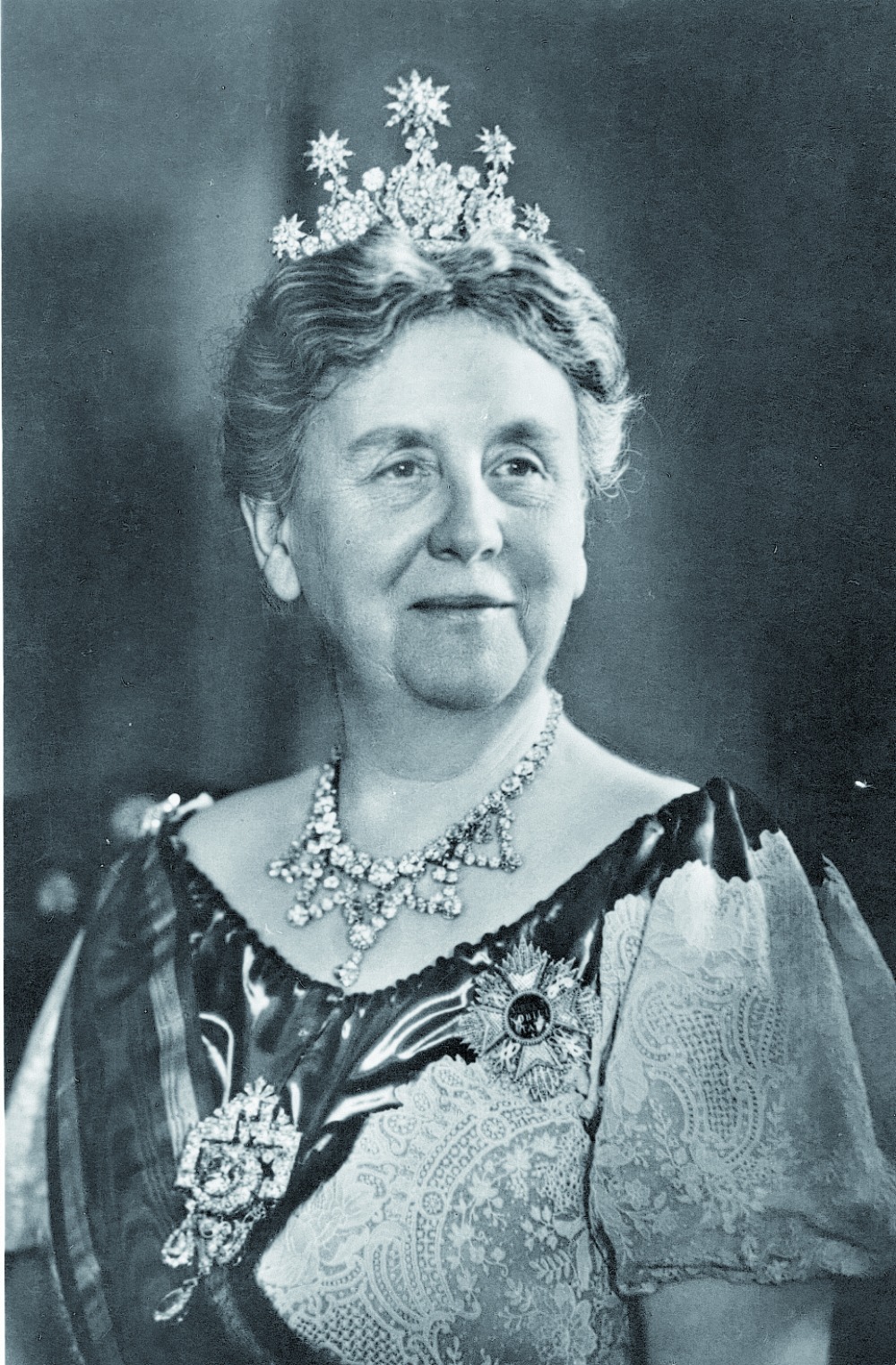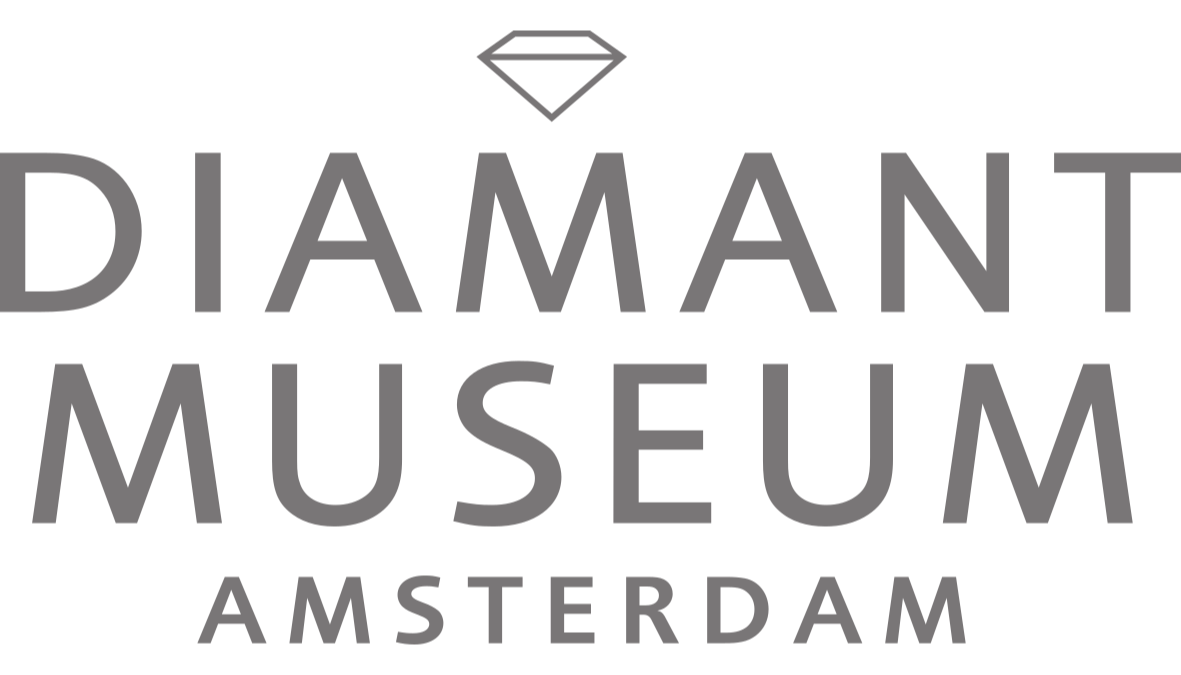The various generations of the Dutch Dynasty of Oranje-Nassau have built up a remarkable collection of jewels over more than 350 years. At the beginning of the dynasty, the jewels were regarded as valuable objects which symbolized power and status.
In 1968, Queen Juliana placed a number of important jewels with the Crown Property Foundation of the House of Oranje-Nassau. In this way, they remain available for use for coming generations, but may not be sold.


From the second half of the 19th century onwards, the people of the Netherlands have repeatedly presented jewels to its Queens as a national gift. When in 1879 Willem III married for the second time, his wife Queen Emma was given a diamond rivière, or necklace, and a large brooch as a ‘National Tribute’. In 1901, on the occasion of her marriage to Prince Hendrik, Queen Wilhelmina received a parure (a set of jewellery) as a national gift, consisting of a tiara, a necklace and two bracelets. In the centre of the tiara is a brilliant ‘larger than a pigeon’s egg, pure as a dewdrop’. On the occasion of her marriage in 1937, the inhabitants of what was then the Dutch colony East Indies (Indonesia) presented the then Princess Juliana with a bracelet which contains more than 1700 flawless bluewhite diamonds. On the fiftieth birthday of Queen Juliana in 1959, the people of the Netherlands gave her a bracelet watch. Official portrait of Princess Juliana, with the wide diamond bracelet that she received from the people of the Dutch colony East Indies on the occasion of her marriage, 1937. Photo: F. Ziegler (Collection: Koninklijk Huisarchief, The Hague)

On the occasion of her wedding to Prince Hendrik van Mecklenburg-Schwerin in 1901, Queen Wilhelmina received a parure of ornamental jewels as a gift from the Dutch population. The set consisted of a tiara, a necklace and two bracelets. Set in the centre of the tiara was a diamond of more than 20 carats, ‘larger than a pigeon’s egg, pure as a dewdrop’, originating from the Golconda mine in India. After the death of Queen Wilhelmina in 1962, all the stones, including the Queen Wilhelmina diamond, were removed from the tiara, to be set in newly-designed jewellery pieces.

Official portrait of Queen Wilhelmina with the ornaments from the national gift on the occasion of her marriage in 1901. Photo: Wegner & Mottu, Amsterdam 1903. (Koninklijk Huisarchief Collectie, The Hague)

Queen Wilhelmina wore different versions of the tiara on multiple occasions, such as on her official portrait when she was 17 in 1897, or on her 25th wedding anniversary in 1926. Photo: Ben Grishaaver (Collectie: Koninklijk Huisarchief, Den Haag).

Queen Emma commissioned a diamond tiara with five stars. They are also be worn separately. Queen Wilhelmina wearing her mother Queen Emma’s star tiara on the occasion of her 40-year jubilee in 1938. Photo: Ben Grishaaver (Collection: Koninklijk Huisarchief, The Hague)

Princess Máxima with tiara during the wedding in the Nieuwe Kerk of Amsterdam on 2 February 2002. (Photo: Toussaint Kluiters-ANP)
| Cookie | Duration | Description |
|---|---|---|
| __cfduid | 1 month | The cookie is used by cdn services like CloudFare to identify individual clients behind a shared IP address and apply security settings on a per-client basis. It does not correspond to any user ID in the web application and does not store any personally identifiable information. |
| _GRECAPTCHA | 5 months 27 days | This cookie is set by Google. In addition to certain standard Google cookies, reCAPTCHA sets a necessary cookie (_GRECAPTCHA) when executed for the purpose of providing its risk analysis. |
| cookielawinfo-checbox-analytics | 11 months | This cookie is set by GDPR Cookie Consent plugin. The cookie is used to store the user consent for the cookies in the category "Analytics". |
| cookielawinfo-checbox-functional | 11 months | The cookie is set by GDPR cookie consent to record the user consent for the cookies in the category "Functional". |
| cookielawinfo-checbox-others | 11 months | This cookie is set by GDPR Cookie Consent plugin. The cookie is used to store the user consent for the cookies in the category "Other. |
| cookielawinfo-checkbox-advertisement | 1 year | The cookie is set by GDPR cookie consent to record the user consent for the cookies in the category "Advertisement". |
| cookielawinfo-checkbox-necessary | 11 months | This cookie is set by GDPR Cookie Consent plugin. The cookies is used to store the user consent for the cookies in the category "Necessary". |
| cookielawinfo-checkbox-performance | 11 months | This cookie is set by GDPR Cookie Consent plugin. The cookie is used to store the user consent for the cookies in the category "Performance". |
| csrftoken | 1 year | This cookie is associated with Django web development platform for python. Used to help protect the website against Cross-Site Request Forgery attacks |
| elementor | never | This cookie is used by the website's WordPress theme. It allows the website owner to implement or change the website's content in real-time. |
| viewed_cookie_policy | 11 months | The cookie is set by the GDPR Cookie Consent plugin and is used to store whether or not user has consented to the use of cookies. It does not store any personal data. |
| Cookie | Duration | Description |
|---|---|---|
| _ga | 2 years | This cookie is installed by Google Analytics. The cookie is used to calculate visitor, session, campaign data and keep track of site usage for the site's analytics report. The cookies store information anonymously and assign a randomly generated number to identify unique visitors. |
| _gat_gtag_UA_167950907_1 | 1 minute | This cookie is set by Google and is used to distinguish users. |
| _gid | 1 day | This cookie is installed by Google Analytics. The cookie is used to store information of how visitors use a website and helps in creating an analytics report of how the website is doing. The data collected including the number visitors, the source where they have come from, and the pages visted in an anonymous form. |
| _hjFirstSeen | 30 minutes | This is set by Hotjar to identify a new user’s first session. It stores a true/false value, indicating whether this was the first time Hotjar saw this user. It is used by Recording filters to identify new user sessions. |
| Cookie | Duration | Description |
|---|---|---|
| _fbp | 3 months | This cookie is set by Facebook to deliver advertisement when they are on Facebook or a digital platform powered by Facebook advertising after visiting this website. |
| fr | 3 months | The cookie is set by Facebook to show relevant advertisments to the users and measure and improve the advertisements. The cookie also tracks the behavior of the user across the web on sites that have Facebook pixel or Facebook social plugin. |
| Cookie | Duration | Description |
|---|---|---|
| _hjAbsoluteSessionInProgress | 30 minutes | No description |
| _hjid | 1 year | This cookie is set by Hotjar. This cookie is set when the customer first lands on a page with the Hotjar script. It is used to persist the random user ID, unique to that site on the browser. This ensures that behavior in subsequent visits to the same site will be attributed to the same user ID. |
| _hjIncludedInPageviewSample | 2 minutes | No description |
| _hjTLDTest | session | No description |
